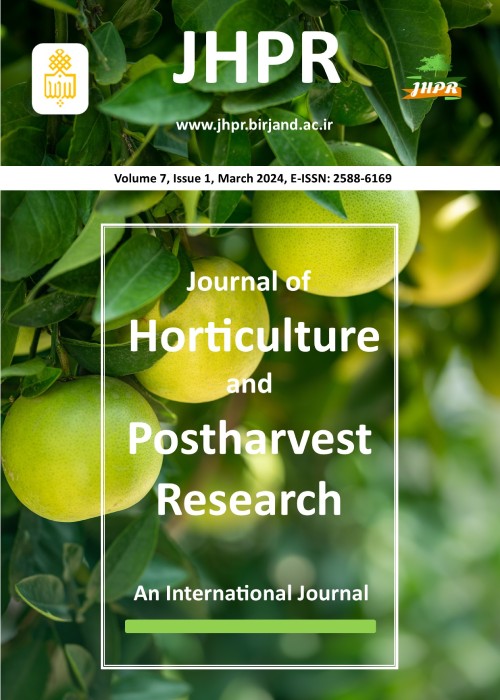Salinity tolerance evaluation of twelve selected pomegranate (Punica granatum) genotypes to achieve tolerant cultivars and rootstocks
Pomegranate (Punica granatum L.) is a very interesting fruit tree for arid and semiarid areas in any part of the world. Like other fruit trees, the selection of tolerant rootstocks and scion is a very good strategy to reduce the adverse effects of salinity on pomegranate. Therefore, this study aimed to evaluate the effect of salinity stress on the growth characteristics of some selected pomegranate genotypes and introduce the most tolerant genotype(s) to salinity for use as a basis in future research.
Research method:
Selected pomegranate genotypes were evaluated using a factorial experiment based on a completely randomized design (CRD) with four replications in 2019-2020. Treatments were included 12 genotypes of Golanr-e-Shahdad (G-Shahdad), Golanr-e-Sarvestan(G-Sarvestan), Golnar-Saveh(G-Saveh), Poostsiah-e-Ardekan(Poostsiah), ‘Malas-e-Yazdi’(‘M-Yazdi’), ‘Malas-e-Saveh’(‘M-Saveh’), ‘Shishecap-e-Ferdos’ (‘Shishecap’), ‘Rabab-e-Neiriz’ (‘Rabab’), ‘Vahshi-e-Babolsar’(‘V-Babolsar’), ‘Narak-e-Lasjerd-Semnan’(‘Narak’), Chahafzal and ‘Voshik-e-Torsh-e-Saravan’(‘Voshik’) and the salinity of the irrigation water in five levels (1, 3, 5, 7 and 9 dS.m-1).
According to the results, the type of genotype and the level of salinity were affected on morphological and physiological traits as well as the concentration of nutrient elements. In all genotypes, the growth indices, relative water content (RWC), chlorophyll index, and total chlorophyll reduced as a result of increasing the salinity level. But the percentage of necrotic leaves, percentage of fallen leaves, ion leakage, concentration of Na+, the concentration of Cl- and Na+/K+ ratio increased. At salinity level of 7dS.m-1, necrotic leaves (3.11% &23.98%), fallen leaves (1.05% & 5.70%), ion leakage (5.87% & 22.10%), Na+(0.31% & 1.29%), concentration of Cl-(0.13%& 1.10%), concentration of K+(0.64% & -0.07%) and Na+/K+ ratio (0.09 & 2.28 units) increased in Chahafzal and Voshik genotypes, respectively.
Research limitations:
No limitations to report.
Originality/Value:
‘Chahafzal’ and ‘Poostsiah’ genotypes were recognized as the most tolerant to salinity according to the results. In contrast, Voshik and M-Saveh genotypes were more sensitive to salinity. The tolerant genotypes will be used in plans as rootstocks to graft the selected genotypes on them.
- حق عضویت دریافتی صرف حمایت از نشریات عضو و نگهداری، تکمیل و توسعه مگیران میشود.
- پرداخت حق اشتراک و دانلود مقالات اجازه بازنشر آن در سایر رسانههای چاپی و دیجیتال را به کاربر نمیدهد.



